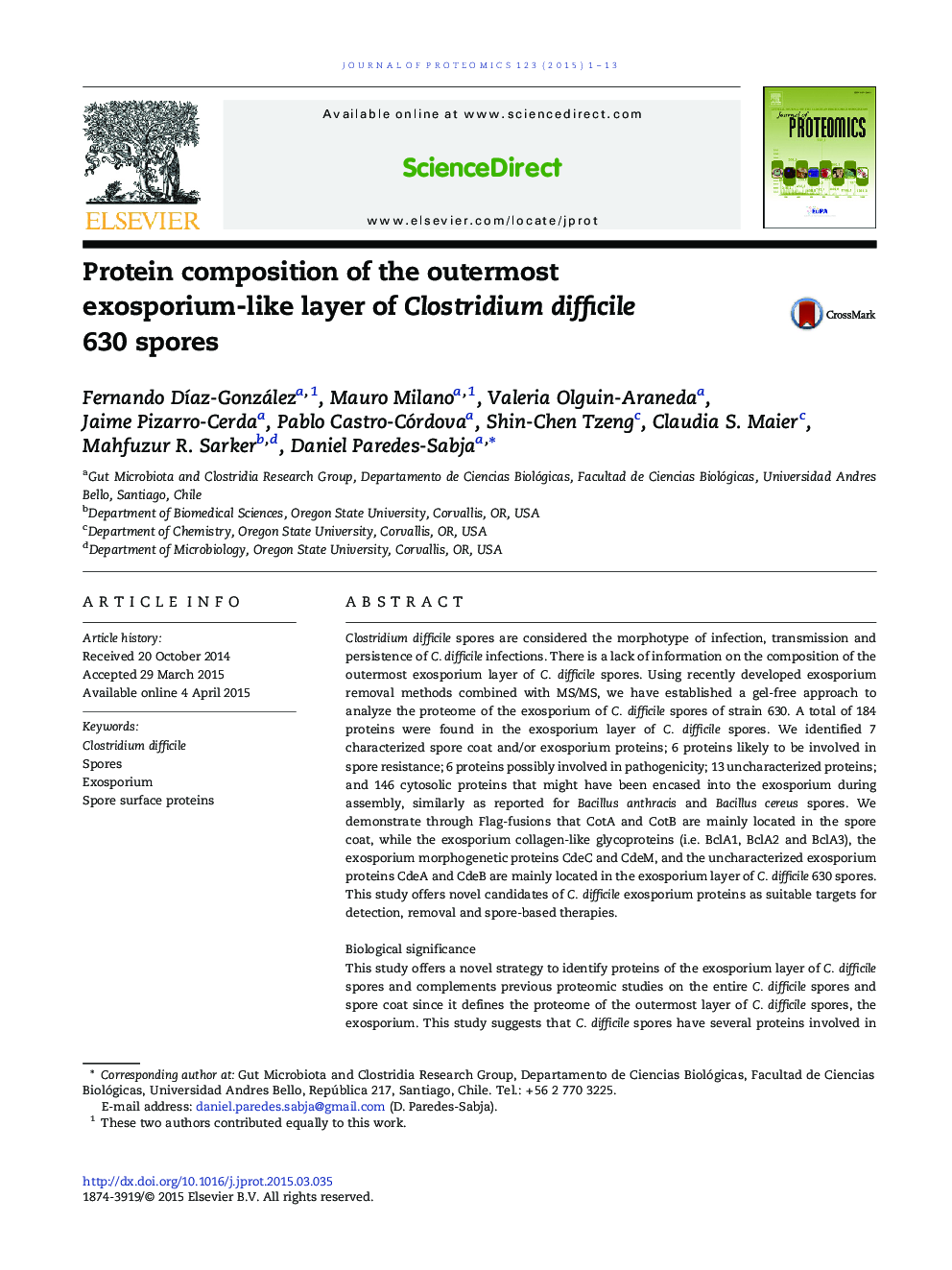| Article ID | Journal | Published Year | Pages | File Type |
|---|---|---|---|---|
| 1226061 | Journal of Proteomics | 2015 | 13 Pages |
•Three gel-free strategies to analyze the exosporium layer of C. difficile spores were developed.•A total of 184 proteins were found in the exosporium layer of C. difficile spores.•Seven characterized spore coat and/or exosporium protein were identified.•Thirteen uncharacterized proteins, likely involved in the assembly and structure of the exosporium were identified.
Clostridium difficile spores are considered the morphotype of infection, transmission and persistence of C. difficile infections. There is a lack of information on the composition of the outermost exosporium layer of C. difficile spores. Using recently developed exosporium removal methods combined with MS/MS, we have established a gel-free approach to analyze the proteome of the exosporium of C. difficile spores of strain 630. A total of 184 proteins were found in the exosporium layer of C. difficile spores. We identified 7 characterized spore coat and/or exosporium proteins; 6 proteins likely to be involved in spore resistance; 6 proteins possibly involved in pathogenicity; 13 uncharacterized proteins; and 146 cytosolic proteins that might have been encased into the exosporium during assembly, similarly as reported for Bacillus anthracis and Bacillus cereus spores. We demonstrate through Flag-fusions that CotA and CotB are mainly located in the spore coat, while the exosporium collagen-like glycoproteins (i.e. BclA1, BclA2 and BclA3), the exosporium morphogenetic proteins CdeC and CdeM, and the uncharacterized exosporium proteins CdeA and CdeB are mainly located in the exosporium layer of C. difficile 630 spores. This study offers novel candidates of C. difficile exosporium proteins as suitable targets for detection, removal and spore-based therapies.Biological significanceThis study offers a novel strategy to identify proteins of the exosporium layer of C. difficile spores and complements previous proteomic studies on the entire C. difficile spores and spore coat since it defines the proteome of the outermost layer of C. difficile spores, the exosporium. This study suggests that C. difficile spores have several proteins involved in protection against environmental stress as well as putative virulence factors that might play a role during infection. Spore exosporium structural proteins were also identified providing the ground basis for further functional studies of these proteins. Overall this work provides new protein target for the diagnosis and/or therapeutics that may contribute to combat C. difficile infections.
Graphical AbstractFigure optionsDownload full-size imageDownload high-quality image (124 K)Download as PowerPoint slide
